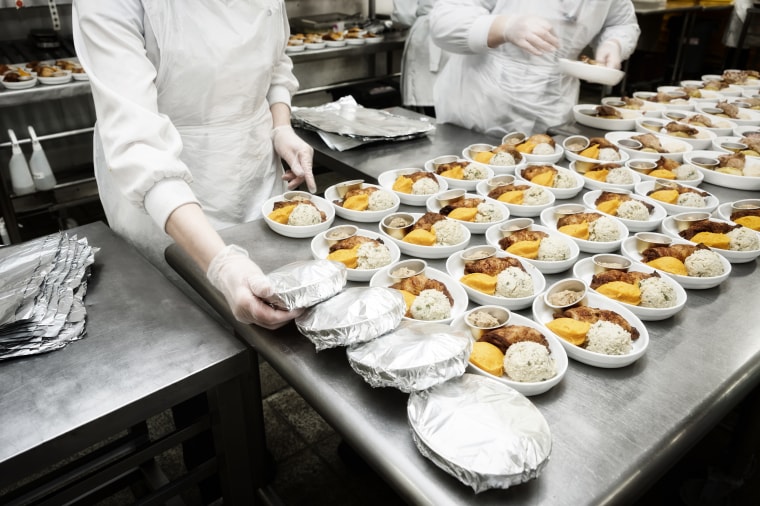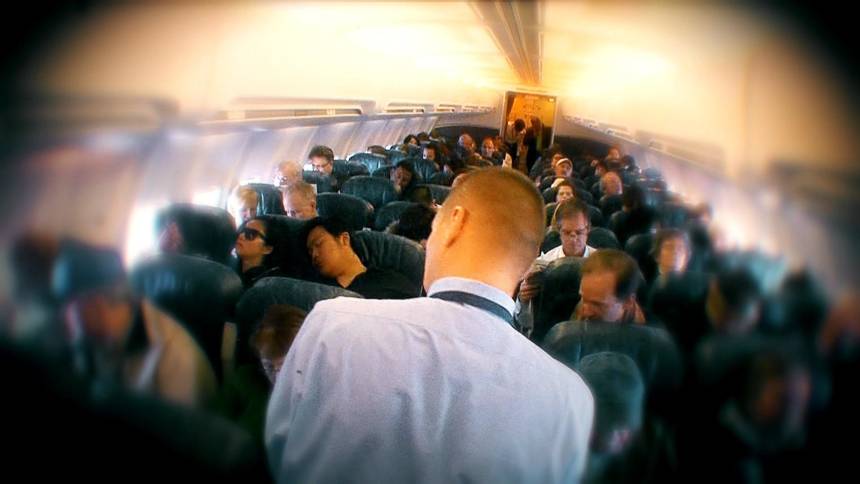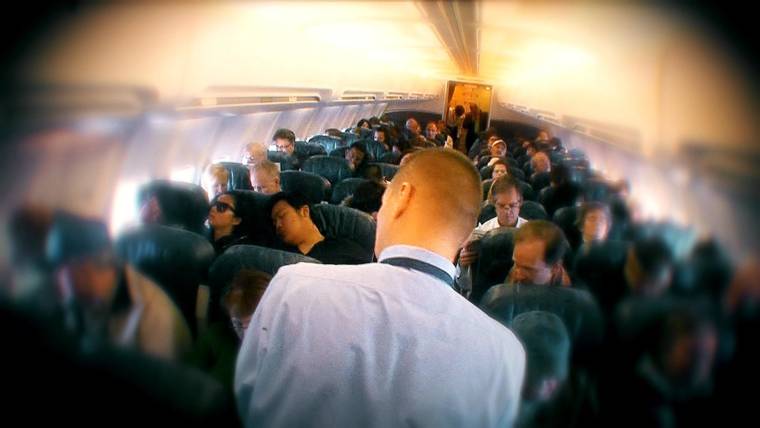 |
| Anuj Shrestha / for NBC News |
By Adiel Kaplan, Lindsey Bomnin, Vicky Nguyen, Julianna Rennie and Erin Williams
Jason Alderman was hungry. It was the beginning of his regular Sunday night commute from San Francisco to Boston, but unlike most weeks, he hadn't grabbed food before boarding his plane. So that June 2018 evening, the public relations executive did something he'd sworn he'd never do again: He ate the in-flight meal.
Sitting in business class, he ordered the duck ravioli after he says the flight attendant assured him it was "very good." But a few hours later, Alderman knew something was wrong.
"About three-quarters of the way through the flight, I start feeling really bad. Really, really bad," he recalled. "If you've never had food poisoning before, it's like going 10 rounds with Muhammad Ali."
Alderman says he managed to reach his Boston apartment before he became violently ill.
He can't remember how long it lasted. "You sort of get lost in this time warp of misery," he said. "I got a few hours of sleep, cleaned myself off, took a shower, and went into work. It was probably one of my lower performing days."
Is airline food safe to eat? What you need to know
DEC. 27, 201903:44
Alderman's story may carry a familiar ring for many travelers. Jokes and tales about the quality of in-flight meals are nothing new. But just how safe is airline food?
An NBC News investigation of airline catering found an industry with limited oversight in which outbreaks are difficult to track. Food safety for airline caterers and airlines is regulated by the federal Food and Drug Administration, which requires inspections of this industry far less frequently than it recommends local health agencies inspect restaurants. When airline food inspections do occur, they can reveal serious safety violations — as many as 22 in a single inspection — but rarely lead to penalties.
Under the FDA's rules, the agency only has to inspect airline caterers every three to five years. FDA rules for airlines are even looser than for caterers: planes receive random FDA inspections "when time and opportunity allow," according to an agency manual.
In contrast, the FDA's food code, which guides the food safety rules adopted by state and local governments, recommends that local authorities inspect food establishments every six months, with exceptions for low-risk facilities. But airline catering facilities don't always fall under those codes. The FDA considers them different from restaurants because caterers do not sell food directly to consumers, instead contracting with airlines that do.

Some states, like California, do send health inspectors to airline catering facilities. But state and local inspection agencies in multiple states — including those that oversee the cities and counties where both Chicago airports, the Dallas-Fort Worth airport and the Atlanta airport are located — told NBC News that airline caterers were outside their jurisdiction, and only inspected by the FDA.
"Dates of inspection represent only a snapshot of FDA's engagement with companies," the FDA said in a statement. "They are not an accurate indicator of FDA's overall engagement. Between inspections, FDA often engages regularly with companies, particularly regarding corrective actions."
In the past four years, FDA inspectors have found condensation dripping onto food, fans blowing dust on food, thermometers off by as much as 25 degrees, raw meat contaminating cooked meat, moldy bread, live birds and insects, as well as bird and rodent poop and more at airline catering facilities, according to more than 1,000 pages of inspection reports obtained by public records request.
Whether those violations may have led to illnesses is difficult to say, according to food safety experts. NBC News also found that tracking foodborne illnesses from airplane food is particularly challenging. First of all, the victims disperse.
"Outbreaks from airline food are very difficult to identify because the people get dispersed into various locations," said Roy Costa, an environmental health inspector and trainer who has worked as a state food inspector and served as an expert witness in food safety lawsuits. "It's not like having a cluster of people that you can identify all had one exposure, so it's difficult to pin them down."
The Centers for Disease Control and Prevention estimates that 48 million Americans get food poisoning every year. Scientists have identified more than 250 foodborne illnesses ranging from mild to deadly, all with different incubation periods. The most common ones can hit anywhere from 30 minutes after eating to up to four weeks later, according to the CDC. The longer the incubation period, the harder it is to connect it to the food that spread the bacteria.
Travel isn't the only barrier to discovering potential outbreaks. The systems for reporting illnesses can be confusing to navigate — so even when passengers try to report their illnesses, the stories can fall through the cracks.
'Oh, it's negligent'
Airline catering is a nearly $6 billion industry in the United States alone, according to an analysis of the industry by market research firm IBISWorld. It is dominated by three companies: LSG Sky Chefs (owned by the German airline Lufthansa and larger than the next two caterers combined), Gate Gourmet and Flying Food Group. Together, they make up nearly half the U.S. market. While a few airlines, like United, do some of their catering in-house, most in-flight meals and snacks on major airlines are supplied by catering companies.

Catering facilities are typically on airport grounds, or located within a few miles of the tarmac. After preparation, food is loaded onto narrow carts that fit in airplane aisles, then placed on trucks with hydraulic lifts that take it to waiting planes.


No comments:
Post a Comment